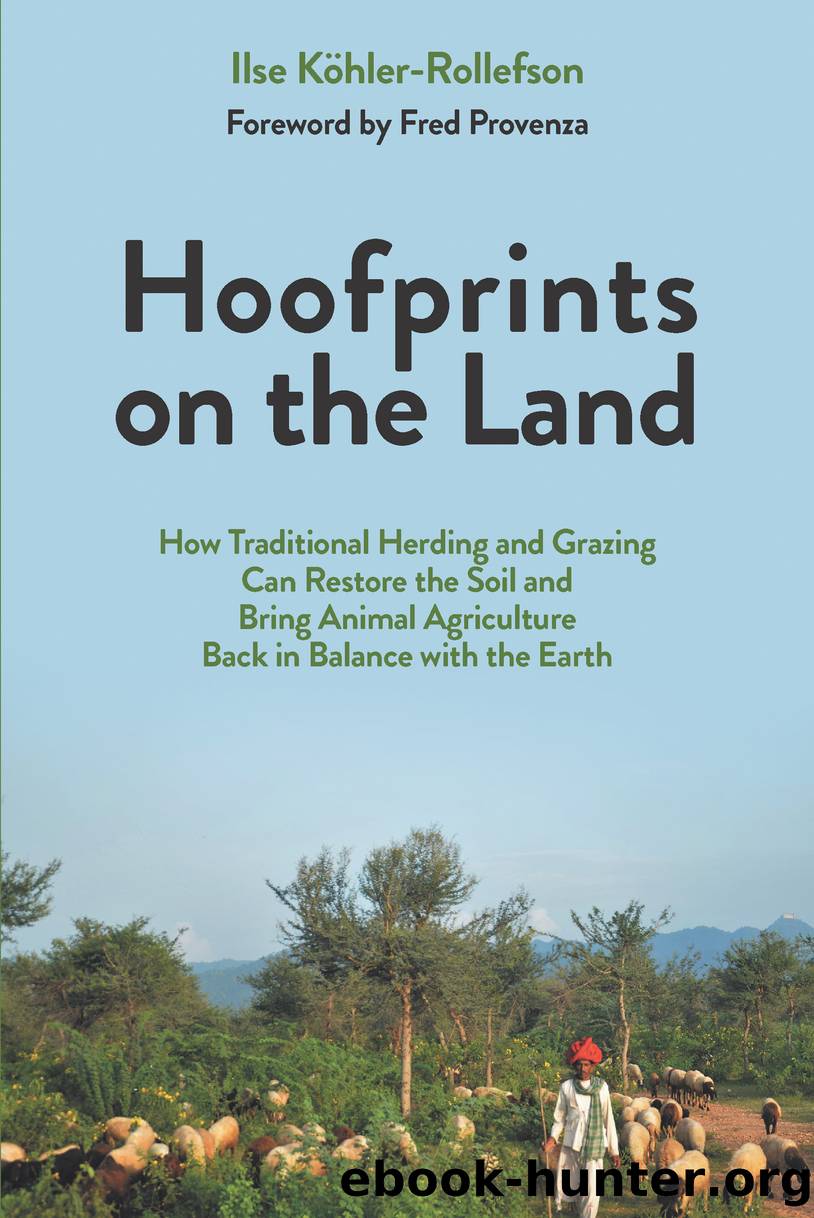Hoofprints on the Land by Ilse Köhler-Rollefson

Author:Ilse Köhler-Rollefson
Language: eng
Format: epub
Publisher: Chelsea Green Publishing
Research on Spainâs transhumant sheep revealed that the Cañadas represent ecological corridors that facilitate the movements of plants and insects and that livestock act as âseed taxisâ. This phenomenon was first studied in depth by Pablo Manzano and Juan Malo who discovered that a flock of a thousand sheep can transport 200 million seeds during their 1,500km (900 mile)-long migration. In times of climate change, this is of phenomenal importance. It allows plants to move from a habitat they were originally adapted to but that has become too hot or dry, or otherwise hostile, into a new area that provides better conditions. Sheep act as a removals van for plants to an environment that is more to their liking, and this works not only for plants, but also for lizards, beetles and grasshoppers. Their service thereby prevents extinction due to climate change as it can be an important vehicle for plants to move into new areas that fit their requirements and thereby prevent their extinction.12 In Germany, scientists have tried to put a price tag on the ecological services provided by sheep, who were found to redistribute up to 8,500 seeds from 57 species, and came up with the value of some 4,500 euros for a 200-head flock, if the seeds had to be purchased, transported and sown.13
Sheep donât just do this by default due to the nature of their wooliness; some herders make conscious efforts to disperse the seeds of preferred plants. An example for traditional regeneration is provided by pastoralists in the Islamic Republic of Iran who pack seeds in little bags and hang these around the necks of their sheep. During grazing the seeds drop through little holes in the bags and are worked into the ground by the sheepâs hooves.14
It is not just that livestock transport seeds, they also aid their germination through scarification. âScarificationâ is a botanical term that refers to weakening the coat of a seed, so that it can break up and germinate. Many acacia trees, for instance, have very hard seed coats and their seeds need to pass through the stomach of a ruminant in order to sprout. The rescued camels that we kept in an enclosure on our campus for several months about five years ago left us a lovely gift: they have turned what was a bare field into a fledgling forest of young acacia (Acacia leucophloea) trees, a species that is otherwise difficult to propagate.
After they have scarified the seeds, livestock then conveniently trample them into the ground like a forest gardener. Trampling has other ecological effects as well, mostly positive, although it all depends on the intensity and the context. The depressions left by hooves can become filled with water and turn into mini habitats for insects and amphibians, which then provide food for all kinds of birds and mammals. And here we come to the general role of grazing animals at the bottom of the food chain. Their droppings are powerful incubators for a huge diversity of
Download
This site does not store any files on its server. We only index and link to content provided by other sites. Please contact the content providers to delete copyright contents if any and email us, we'll remove relevant links or contents immediately.
Sapiens: A Brief History of Humankind by Yuval Noah Harari(13993)
The Tidewater Tales by John Barth(12397)
Mastermind: How to Think Like Sherlock Holmes by Maria Konnikova(6940)
Do No Harm Stories of Life, Death and Brain Surgery by Henry Marsh(6690)
The Thirst by Nesbo Jo(6442)
Why We Sleep: Unlocking the Power of Sleep and Dreams by Matthew Walker(6362)
Life 3.0: Being Human in the Age of Artificial Intelligence by Tegmark Max(5193)
Sapiens by Yuval Noah Harari(5125)
The Longevity Diet by Valter Longo(4861)
The Body: A Guide for Occupants by Bill Bryson(4587)
The Rules Do Not Apply by Ariel Levy(4526)
The Immortal Life of Henrietta Lacks by Rebecca Skloot(4261)
Why We Sleep by Matthew Walker(4192)
Animal Frequency by Melissa Alvarez(4156)
Yoga Anatomy by Kaminoff Leslie(4107)
The Hacking of the American Mind by Robert H. Lustig(4090)
All Creatures Great and Small by James Herriot(3988)
Barron's AP Biology by Goldberg M.S. Deborah T(3947)
Double Down (Diary of a Wimpy Kid Book 11) by Jeff Kinney(3931)
